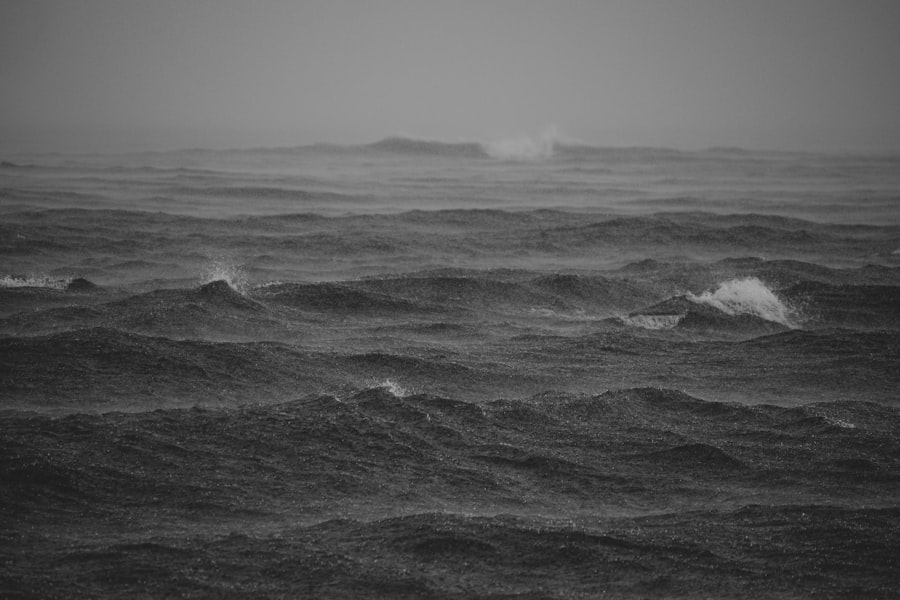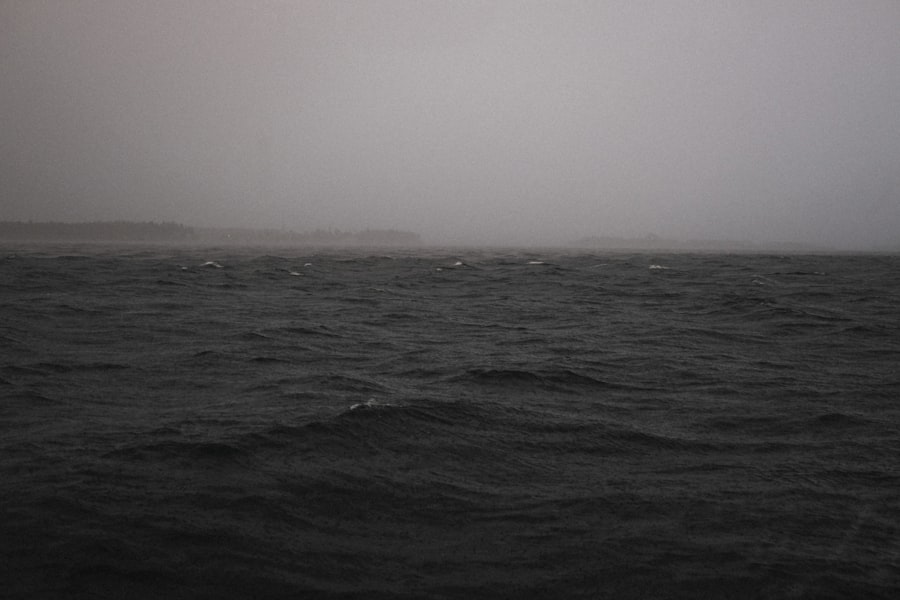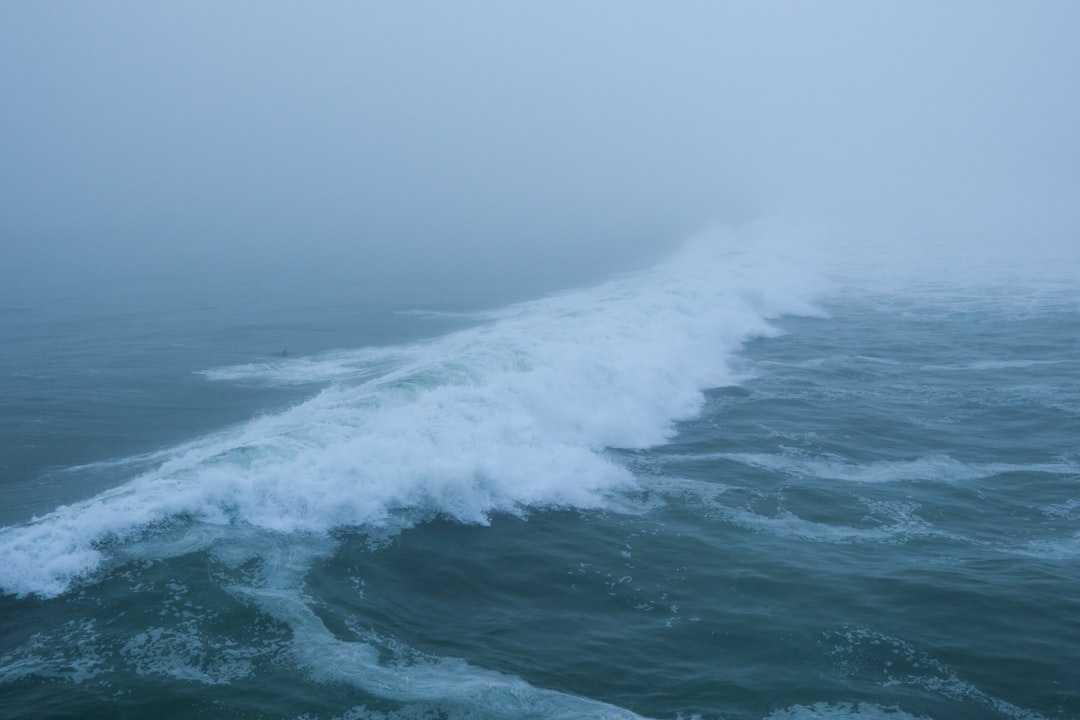The Drake Passage, a body of water located between the southern tip of South America and Antarctica, is renowned for its tumultuous seas and unpredictable weather patterns. This narrow stretch of ocean, measuring approximately 800 kilometers (500 miles) in width, serves as a critical conduit for maritime traffic between the Atlantic and Pacific Oceans. Named after the English explorer Sir Francis Drake, who navigated these waters in the late 16th century, the passage has since become a focal point for scientific research, tourism, and commercial shipping.
Its unique geographical position contributes to its significance, as it is the only place where the waters of the Atlantic and Pacific Oceans converge without any landmass to interrupt their flow. The Drake Passage is often characterized by its rough seas and strong currents, which can pose significant challenges for vessels traversing this region. The confluence of the Antarctic Circumpolar Current, which flows unimpeded around Antarctica, and the prevailing winds creates a dynamic environment that can change rapidly.
Mariners must be acutely aware of these conditions, as they can lead to sudden storms and high waves. The passage is not only a test of navigational skill but also a demonstration of nature’s raw power, making it a subject of fascination for adventurers and researchers alike.
Key Takeaways
- Drake Passage is a narrow stretch of water between South America’s Cape Horn and the South Shetland Islands of Antarctica, known for its rough seas and challenging navigation conditions.
- Sea conditions in Drake Passage can be extremely rough, with strong winds, high waves, and unpredictable weather patterns, making it one of the most treacherous waterways in the world.
- Safety precautions for navigating Drake Passage include securing all loose items, wearing appropriate safety gear, and ensuring all passengers and crew are briefed on emergency procedures.
- Weather forecasting is crucial for safe navigation through Drake Passage, as it helps vessels anticipate and prepare for changing weather conditions and avoid potential hazards.
- Emergency protocols at sea in Drake Passage include regular drills, maintaining communication with rescue services, and having well-equipped lifeboats and emergency supplies on board.
Sea Conditions in Drake Passage
The sea conditions in the Drake Passage are notoriously volatile, with waves that can reach heights of over 10 meters (33 feet) during storms.
The winds in this region can be fierce, often exceeding 50 knots, which can create treacherous sailing conditions.
Mariners must remain vigilant and prepared for rapid changes in weather, as sunny skies can quickly give way to dark clouds and turbulent seas. The combination of strong winds and high waves makes the Drake Passage one of the most challenging maritime routes in the world. In addition to the physical challenges posed by the sea conditions, the Drake Passage is also home to a variety of marine life that can be affected by these turbulent waters.
Whales, seals, and seabirds are commonly spotted in this region, drawn by the rich nutrient supply brought about by the mixing of ocean currents. However, the harsh conditions can also pose risks to these animals, as well as to vessels navigating through their habitat. Understanding the interplay between sea conditions and marine life is crucial for both environmental conservation efforts and safe navigation.
Safety Precautions for Navigating Drake Passage

Navigating the Drake Passage requires meticulous planning and adherence to safety precautions to mitigate risks associated with its challenging conditions. Mariners are advised to conduct thorough pre-voyage assessments, including reviewing weather forecasts and sea state reports. It is essential to equip vessels with appropriate safety gear, such as life jackets, flares, and emergency beacons.
Additionally, ensuring that all crew members are familiar with safety protocols can significantly enhance overall preparedness. Regular safety drills should be conducted to ensure that everyone on board knows their roles in case of an emergency. Another critical aspect of safety in the Drake Passage is maintaining effective communication with other vessels and shore-based authorities.
Utilizing VHF radios and satellite communication systems can provide real-time updates on weather conditions and potential hazards. Mariners should also establish a clear plan for monitoring their position and course throughout the journey. By prioritizing safety measures and fostering a culture of vigilance among crew members, vessels can navigate the Drake Passage with greater confidence.
Importance of Weather Forecasting
| Metrics | Importance |
|---|---|
| Preparation | Helps in planning for outdoor activities, events, and travel |
| Safety | Forecasts help in preparing for severe weather conditions and natural disasters |
| Agriculture | Assists farmers in planning planting, harvesting, and irrigation |
| Aviation | Crucial for safe flight operations and route planning |
| Energy | Helps in managing energy demand and supply based on weather patterns |
Weather forecasting plays a pivotal role in ensuring safe navigation through the Drake Passage. Accurate forecasts allow mariners to anticipate changes in weather patterns and adjust their routes accordingly. Modern technology has significantly improved forecasting capabilities, enabling sailors to access real-time data on wind speeds, wave heights, and storm systems.
This information is invaluable for making informed decisions about when to set sail or when to seek shelter from impending storms. Moreover, understanding local weather phenomena is essential for successful navigation in this region. The Drake Passage is influenced by various climatic factors, including the Antarctic Oscillation and El Niño events, which can lead to dramatic shifts in weather patterns.
Mariners who are well-versed in these influences can better prepare for potential challenges during their journey. By leveraging advanced forecasting tools and staying informed about regional weather trends, sailors can enhance their safety and increase their chances of a successful passage.
Emergency Protocols at Sea
In the event of an emergency while navigating the Drake Passage, having well-defined protocols in place is crucial for ensuring the safety of all crew members on board. Emergency situations can arise from various factors, including equipment failure, medical emergencies, or severe weather conditions. Each vessel should have a comprehensive emergency response plan that outlines specific actions to be taken in different scenarios.
This plan should be regularly reviewed and practiced through drills to ensure that all crew members are familiar with their responsibilities. Additionally, vessels should be equipped with essential emergency equipment such as lifeboats, first aid kits, and emergency signaling devices. In case of an evacuation or distress situation, crew members must know how to operate this equipment effectively.
Establishing clear communication channels during emergencies is also vital; crew members should be trained to use radios or other communication devices to relay information quickly and accurately. By prioritizing emergency preparedness and fostering a culture of safety on board, vessels can navigate the Drake Passage with greater assurance.
Tips for Staying Safe on a Vessel

Staying safe on a vessel while navigating the Drake Passage involves more than just adhering to safety protocols; it also requires a proactive approach to personal safety and well-being. Crew members should be encouraged to wear appropriate clothing that provides protection against cold temperatures and wet conditions. Layering clothing is advisable, as it allows individuals to adjust their attire based on changing weather conditions.
Additionally, wearing non-slip footwear can help prevent accidents on deck during rough seas. Maintaining situational awareness is another critical aspect of safety at sea. Crew members should remain vigilant and attentive to their surroundings at all times.
This includes monitoring changes in weather conditions, being aware of other vessels in the vicinity, and recognizing potential hazards on board. Regular communication among crew members fosters a sense of teamwork and ensures that everyone is informed about any developments that may affect safety. By cultivating a culture of awareness and preparedness, vessels can enhance their overall safety while navigating the challenging waters of the Drake Passage.
Navigation Equipment for Drake Passage
Navigating the Drake Passage requires specialized equipment designed to withstand harsh marine conditions while providing accurate information for safe passage. Essential navigation tools include GPS systems, radar units, and electronic chart plotters that allow mariners to track their position in real-time. These technologies have revolutionized maritime navigation by providing precise data on location and course adjustments needed to avoid hazards.
In addition to electronic navigation tools, traditional methods such as sextants and compasses remain valuable assets for mariners traversing this region. While modern technology offers convenience and accuracy, understanding traditional navigation techniques can serve as a backup in case of equipment failure. Furthermore, having reliable charts that detail underwater topography and potential hazards is crucial for safe navigation through the unpredictable waters of the Drake Passage.
Communication Protocols at Sea
Effective communication protocols are vital for ensuring safety while navigating the Drake Passage. Vessels must establish clear lines of communication among crew members as well as with other ships and shore-based authorities. Utilizing VHF radios for routine check-ins allows mariners to share information about their position and any changes in sea conditions or weather patterns.
Additionally, maintaining an open channel for emergency communications ensures that assistance can be requested promptly if needed. Incorporating standardized communication procedures can further enhance safety at sea. Crew members should be trained in using specific terminology when relaying information about their status or requesting assistance.
This reduces confusion during critical moments when clear communication is essential for effective decision-making. By prioritizing communication protocols and fostering a culture of collaboration among crew members, vessels can navigate the Drake Passage more safely.
Importance of Experienced Crew
The significance of having an experienced crew cannot be overstated when navigating the challenging waters of the Drake Passage. Seasoned mariners possess valuable knowledge gained from years of experience at sea, allowing them to make informed decisions in high-pressure situations. Their familiarity with local conditions enables them to anticipate changes in weather patterns and respond effectively to emergencies.
Moreover, an experienced crew brings a wealth of skills that contribute to overall safety on board. From navigation expertise to mechanical proficiency, seasoned sailors are equipped to handle various challenges that may arise during a voyage through the Drake Passage.
Medical Preparations for Sea Travel
Medical preparations are an essential aspect of ensuring safety while navigating the Drake Passage. Given the remote nature of this region, access to medical facilities may be limited or non-existent during long voyages. Therefore, vessels should be equipped with comprehensive first aid kits containing supplies for treating common injuries and illnesses that may occur at sea.
Additionally, crew members should receive training in basic first aid procedures to address medical emergencies effectively. This training should cover topics such as CPR, wound care, and how to recognize signs of serious medical conditions like hypothermia or dehydration. Establishing protocols for handling medical emergencies ensures that crew members are prepared to respond promptly if someone requires assistance during their journey through the Drake Passage.
Environmental Considerations in Drake Passage
Navigating the Drake Passage also entails a responsibility toward environmental stewardship. The waters surrounding this region are home to diverse marine ecosystems that play a crucial role in global biodiversity. Mariners must be mindful of their impact on these ecosystems by adhering to regulations aimed at protecting marine life and habitats.
One significant environmental consideration is minimizing pollution from vessels operating in these waters. Implementing waste management practices onboard helps prevent harmful substances from entering the ocean ecosystem. Additionally, mariners should be aware of wildlife interactions while navigating through this region; avoiding disturbances to marine animals contributes to conservation efforts aimed at preserving fragile ecosystems within the Drake Passage.
In conclusion, navigating the Drake Passage presents unique challenges that require careful planning, preparation, and respect for both maritime safety protocols and environmental considerations. By understanding sea conditions, prioritizing safety measures, utilizing advanced navigation equipment, fostering effective communication among crew members, ensuring medical preparedness, and promoting environmental stewardship, mariners can successfully traverse this remarkable yet demanding body of water while safeguarding both themselves and the ecosystems they encounter along the way.
The Drake Passage is renowned for its challenging sea conditions, often described as some of the roughest waters in the world. This treacherous stretch of ocean, located between the southern tip of South America and Antarctica, is a critical passage for ships navigating these remote regions. For those interested in learning more about the unique geographical and oceanographic features that contribute to the Drake Passage’s notorious reputation, a related article can be found on MyGeoQuest. This article delves into the factors influencing the sea conditions in this area, providing valuable insights for adventurers and researchers alike. You can read more about it by visiting this page.
WATCH NOW! Drake Passage: Earth’s Deadliest Waters Revealed
FAQs
What are the typical sea conditions in the Drake Passage?
The Drake Passage is known for its rough seas and challenging conditions due to the convergence of the Atlantic, Pacific, and Southern oceans. It is characterized by strong winds, large waves, and unpredictable weather.
What causes the rough sea conditions in the Drake Passage?
The Drake Passage is a narrow stretch of water between South America’s Cape Horn and the South Shetland Islands of Antarctica. The strong westerly winds and the Antarctic Circumpolar Current create turbulent sea conditions in the area.
How do sea conditions in the Drake Passage affect travel and navigation?
The rough sea conditions in the Drake Passage can make travel and navigation challenging for ships and vessels. It is known for its reputation as one of the roughest stretches of water in the world, and ships crossing the passage often encounter heavy seas and strong winds.
Are there any safety concerns related to sea conditions in the Drake Passage?
Due to the rough sea conditions, travelers and crew on ships crossing the Drake Passage should be prepared for potential seasickness and should take necessary precautions. It is also important for vessels to have experienced crew and appropriate safety measures in place.
What is the best time to travel through the Drake Passage to avoid rough sea conditions?
The best time to travel through the Drake Passage with potentially calmer sea conditions is during the austral summer, from November to March. However, rough seas can still occur during this time, so travelers should be prepared for challenging conditions regardless of the season.
